Looking to increase the impact of your blogging strategy? Wondering what separates the top blogs from the rest of the pack?
You’re in the right place.
Let's dive into 46 statistics about blogging to give you a comprehensive view of the state of blogging right now.
Here are some top picks to get you started:
- More than 2.5 billion blog posts are published each year (Web Tribunal, 2023)
- Nearly 24% of high-performing blogs publish a new post every day (Semrush, 2023)
- Around 44% of bloggers are between the ages of 25 and 34. And nearly 35% are between 35 and 44 (First Site Guide, 2020)
Blog Post Creation and Management Statistics
The stats below provide a glimpse into how bloggers create posts and manage their blogs.
One standout insight is that both the average length of blog posts and the time spent writing them have increased significantly over the past 10 years.
- The average blog post is 1,427 words long. That’s 77% more words than a decade ago. (Orbit Media, 2023)
- The average length of a top-performing blog post is 1,152 words. Low-performing posts are an average of 668 words long. (Semrush, 2023)
- Only 3% of blogs regularly publish articles longer than 3,000 words (Orbit Media, 2023)
- While 22% of bloggers publish posts on a weekly basis, only 2% post daily (Statista, 2021)
- The average blog post takes 3 hours and 51 minutes to write (Orbit Media, 2023)
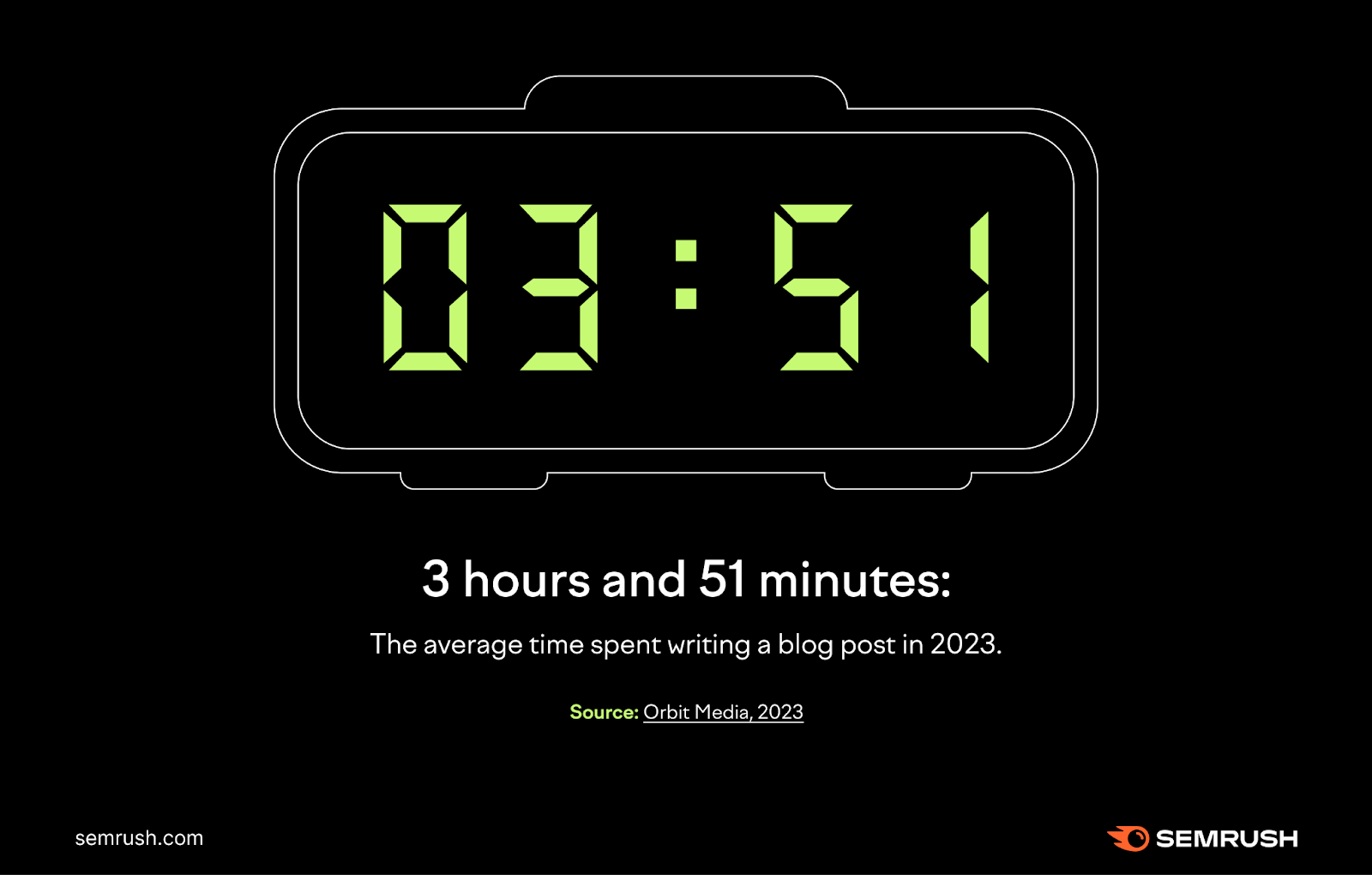
- Of surveyed bloggers, 23% spend between three and five hours per week writing their posts. And 6% spend more than 40 hours per week on their posts. (First Site Guide, 2020)
- The time bloggers spend writing their posts has increased by 60% in the past decade (Orbit Media, 2023)
- Just over 73% of bloggers welcome guest posts on their blogs (First Site Guide, 2020)
- A solid 65% of bloggers use AI to some extent. And 43% use it to generate ideas for their content. (Orbit Media, 2023)
- More than 30% of bloggers audit their content twice a year. And 24% do it once a year. (Semrush, 2023)
- The proportion of bloggers who update their old posts increased from 53% in 2017 to 74% in 2023 (Orbit Media, 2023)
Blog Post Quality Statistics
Here, we consider what the data says about blog post quality.
Note how high-performing blog posts typically take longer to write, are easier to read, and are more likely to include original research.
- What 39% of consumers find most annoying about content is excessive wordiness and/or bad writing (Adobe, 2019)
- The number of bloggers who work with editors has tripled since 2014 (Orbit Media, 2023)
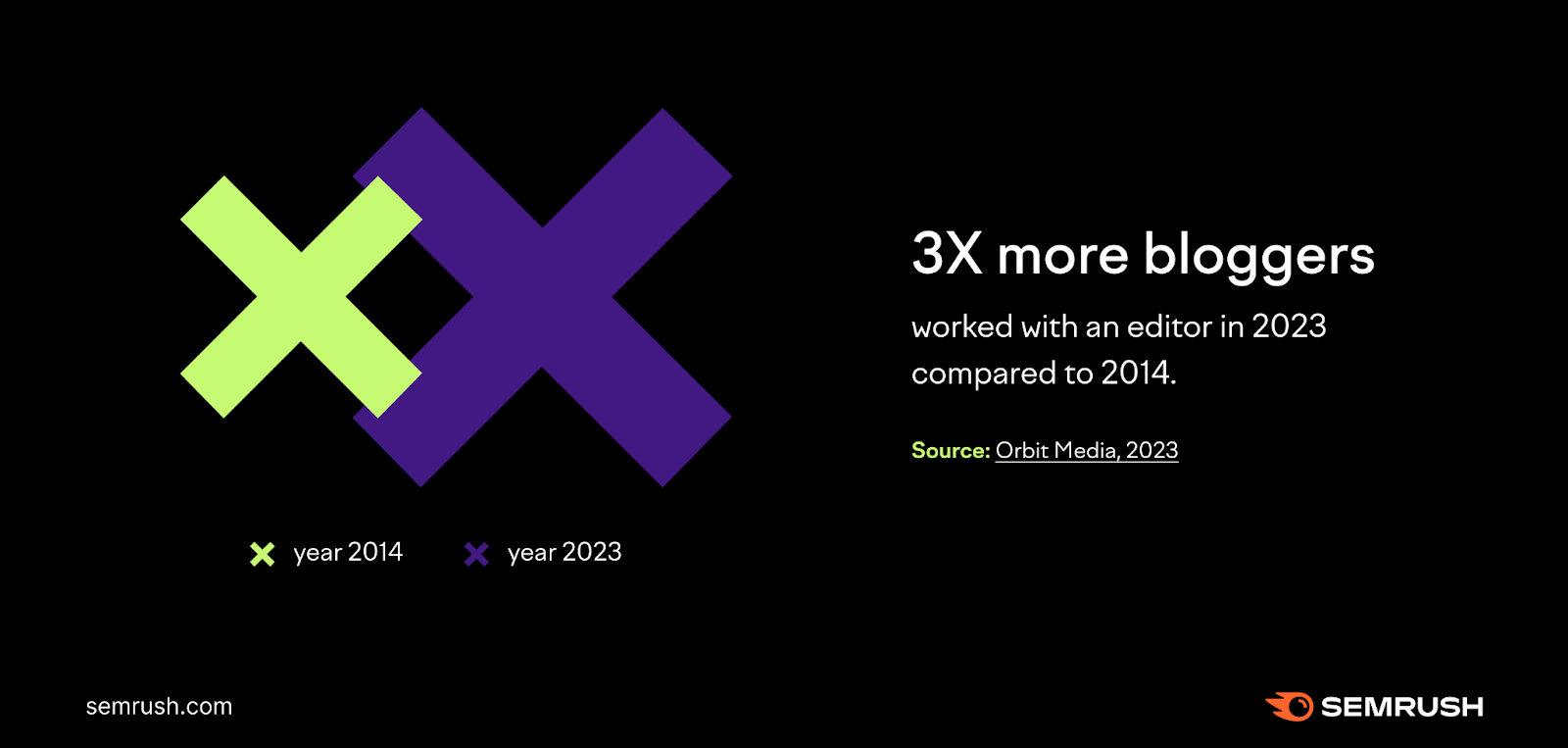
- Bloggers who have a formal editorial process are more likely to experience strong results compared to those who don’t (Orbit Media, 2023)
- Posts that are either easy or fairly easy to read make up 62% of high-performing blog posts. This compares with just 24% of low-performing posts. (Semrush, 2023)
- Of top-performing posts, 5% contain data studies (Semrush, 2023)
- Bloggers who spend more time writing their posts tend to experience more success. And 35% of those who spend more than six hours report strong results. (Orbit Media, 2023)
- More than 30% of bloggers always check analytics related to their content (Statista, 2019)
Blog Performance Statistics
The stats below reveal how much traffic the typical blog receives, where that traffic comes from, and which blogging niches perform best.
It’s worth noting that the majority of bloggers still think their blog has a positive impact on their marketing efforts.
- Less than 30% of blogs receive 1,000 or fewer visitors per month. Roughly 20% receive between 1,001 and 5,000 visits. Andjust 3.7% get more than 500,000 monthly visitors. (First Site Guide, 2020)
- More than 55% of bloggers say their blog drives some marketing results. And 26% say their blog drives strong results. (Orbit Media, 2023)
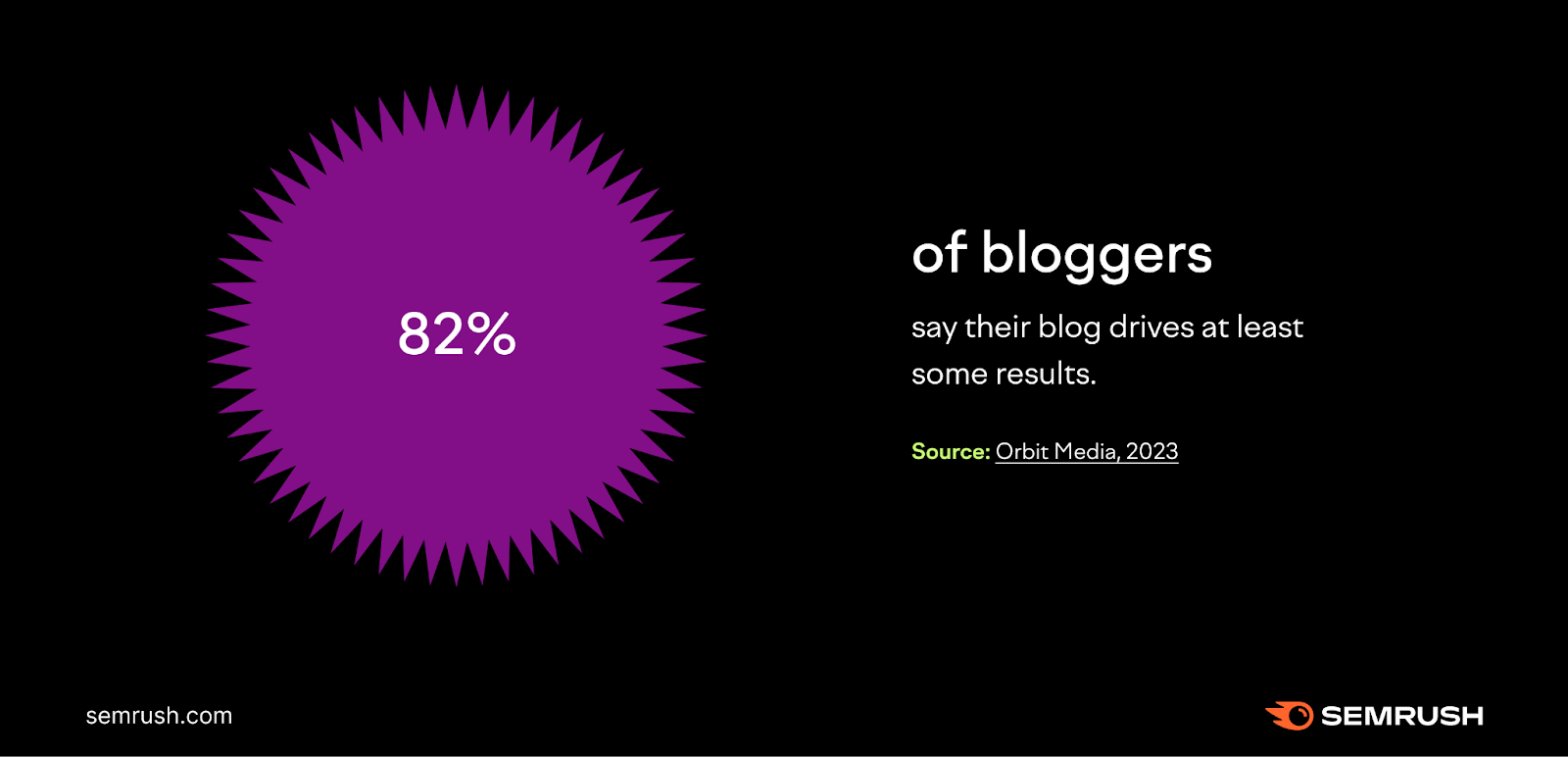
- The most popular blog niches are lifestyle (11.4%), personal development (9.6%), and entrepreneurship (7.9%) (First Site Guide, 2020)
- Almost 50% of bloggers report receiving most of their traffic from social media. And 22% get most of their traffic from organic search. (First Site Guide, 2020)
Blogging Platform Statistics
The following stats highlight which platforms and devices bloggers use to keep their blogs up and running.
Unsurprisingly, WordPress remains the dominant platform in the blogosphere.
- Tumblr boasts almost 600 million blogs on its platform (Tumblr, 2024)
- WordPress users generate around 70 million posts and contribute 77 million comments each month (WordPress, 2024)
- Just over 22% of bloggers use WordPress.com as their blogging platform. Around 19% use Blogspot.com and 18% use WordPress.org. (First Site Guide, 2020)
- A whopping 72% of bloggers update their blogs from mobile devices (First Site Guide, 2020)
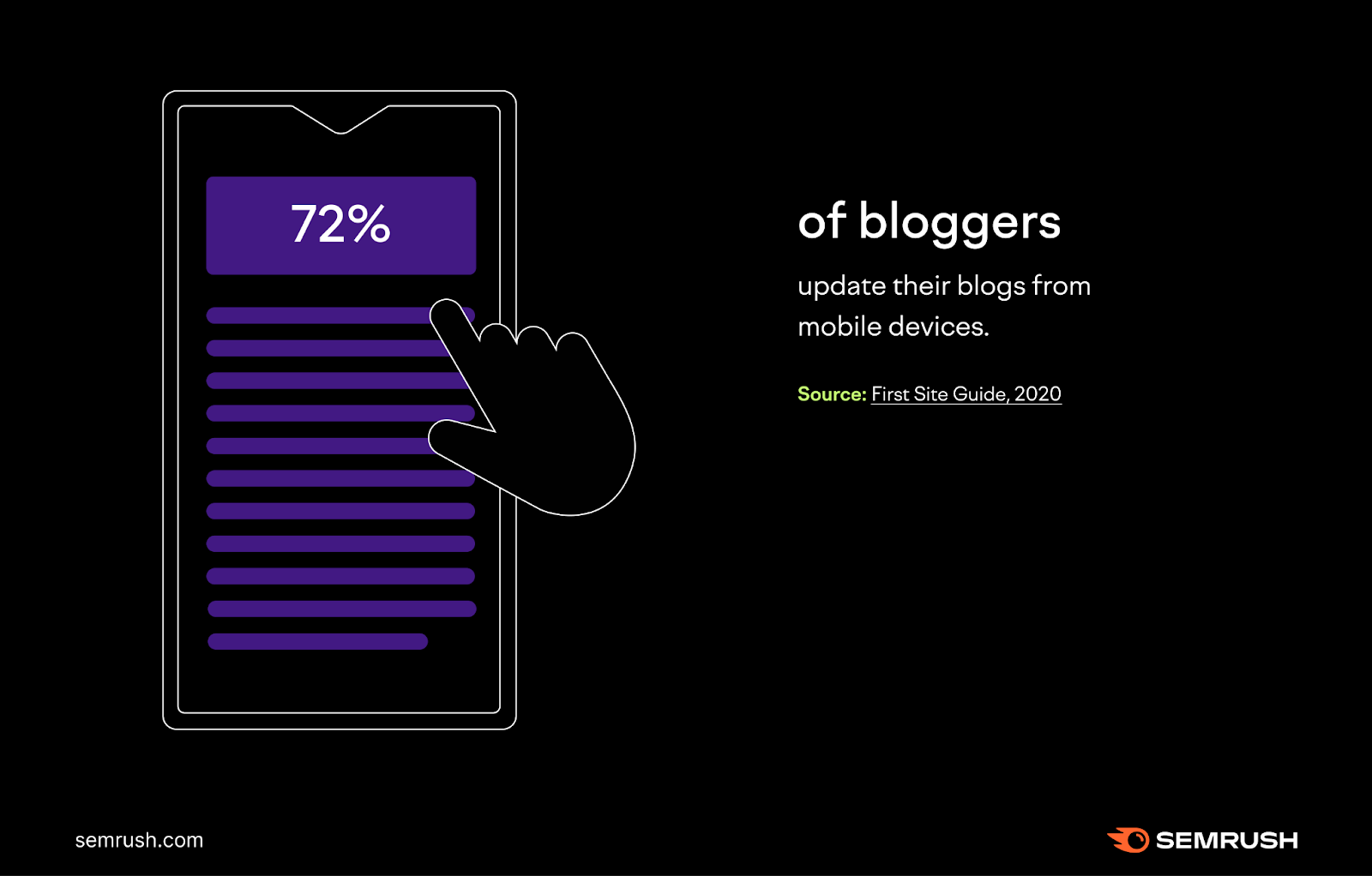
- Almost 29% of bloggers use GoDaddy as their web hosting service. Blueshost is in second place, with 9.9% of bloggers using it. (First Site Guide, 2020)
Blog Post Type and Format Statistics
Now, let’s look at what the stats say about popular blog content formats.
- More than 30% of marketers say that short-form articles are their best-performing content. And 24% say it’s long-form posts. (Semrush, 2023)
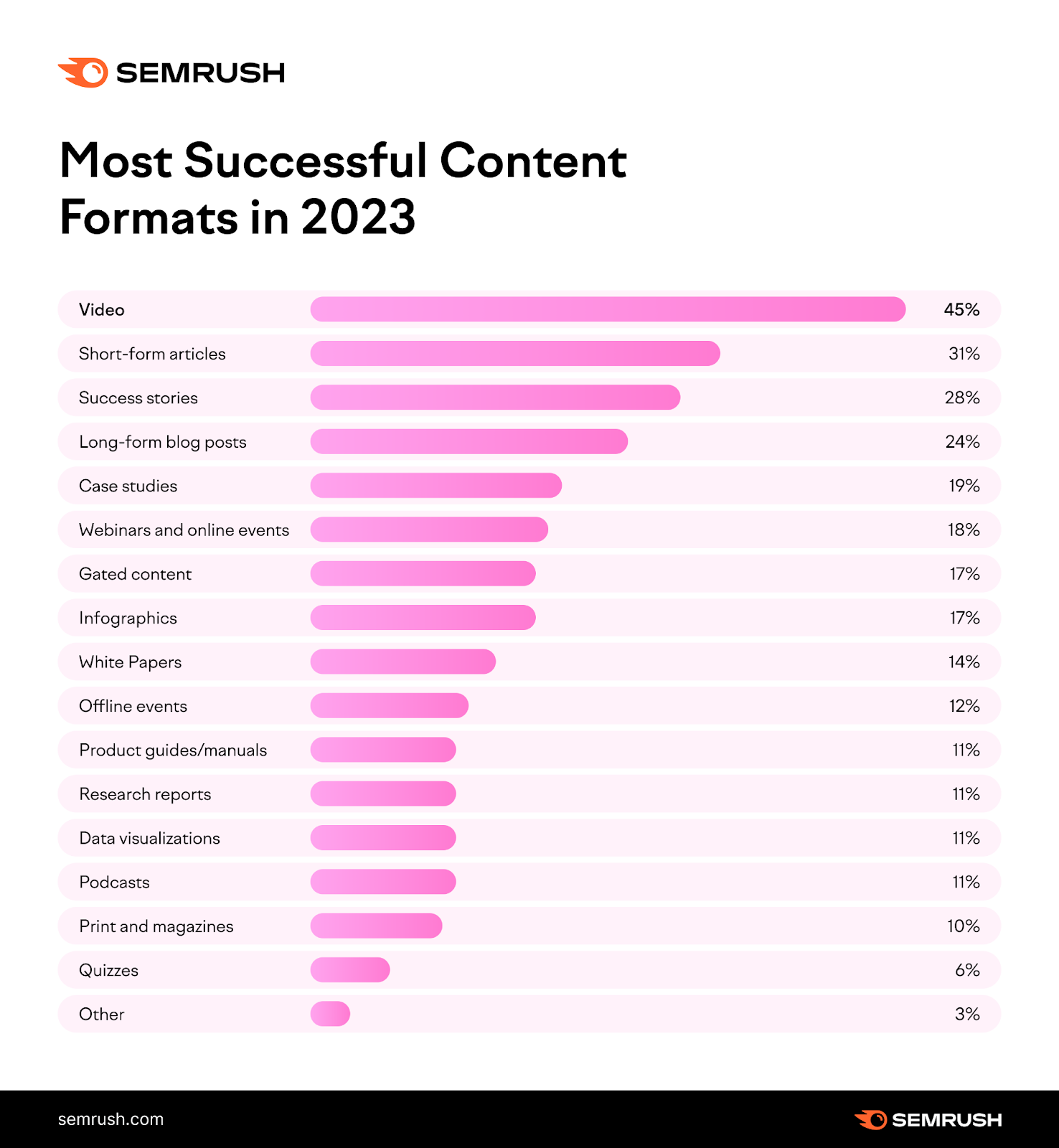
- More than 75% of bloggers have published a how-to article in the past 12 months. Lists, news articles, and long-form guides are also popular content formats. (Orbit Media, 2023)
- A majority of of bloggers (92%) add images to their posts (Orbit Media, 2023)
- While only 8% of blog posts contain at least one video, articles with videos attract 70% more traffic than those without (Semrush, 2023)
Blogger Income Statistics
The following stats reveal the typical income level of the average blogger, common methods of blog monetization, and which niches are most profitable.
- Around 50% of bloggers do it as their full-time job (First Site Guide, 2020)
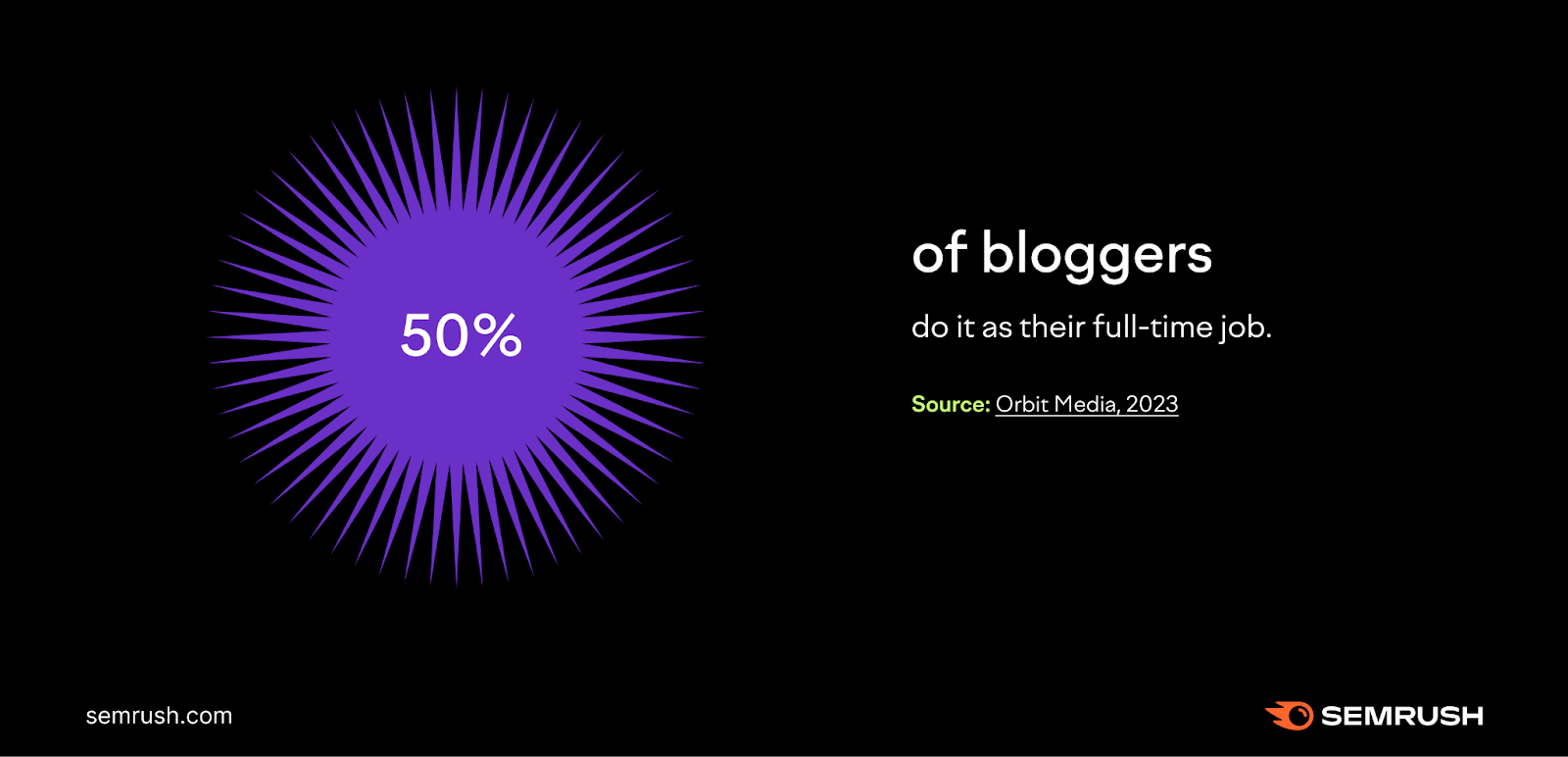
- Bloggers make an average annual salary of $62,275 (ZipRecruiter, 2024)
- The online business niche is the most profitable blog category. And personal finance is in second place. (Productive Blogging, 2024)
- Nearly 38% of bloggers report having a bachelor’s degree (First Site Guide, 2020)
SEO-Focused Blog Statistics
The following statistics about blogging indicate how SEO has become a primary source of traffic for more and more bloggers in recent years.
They also reveal which optimization tactics and content formats tend to have the best impact on blog SEO performance.
- SEO has become an increasingly popular way to gain blog traffic over the past decade, with 66% of bloggers using it in 2023 (Orbit Media, 2023)
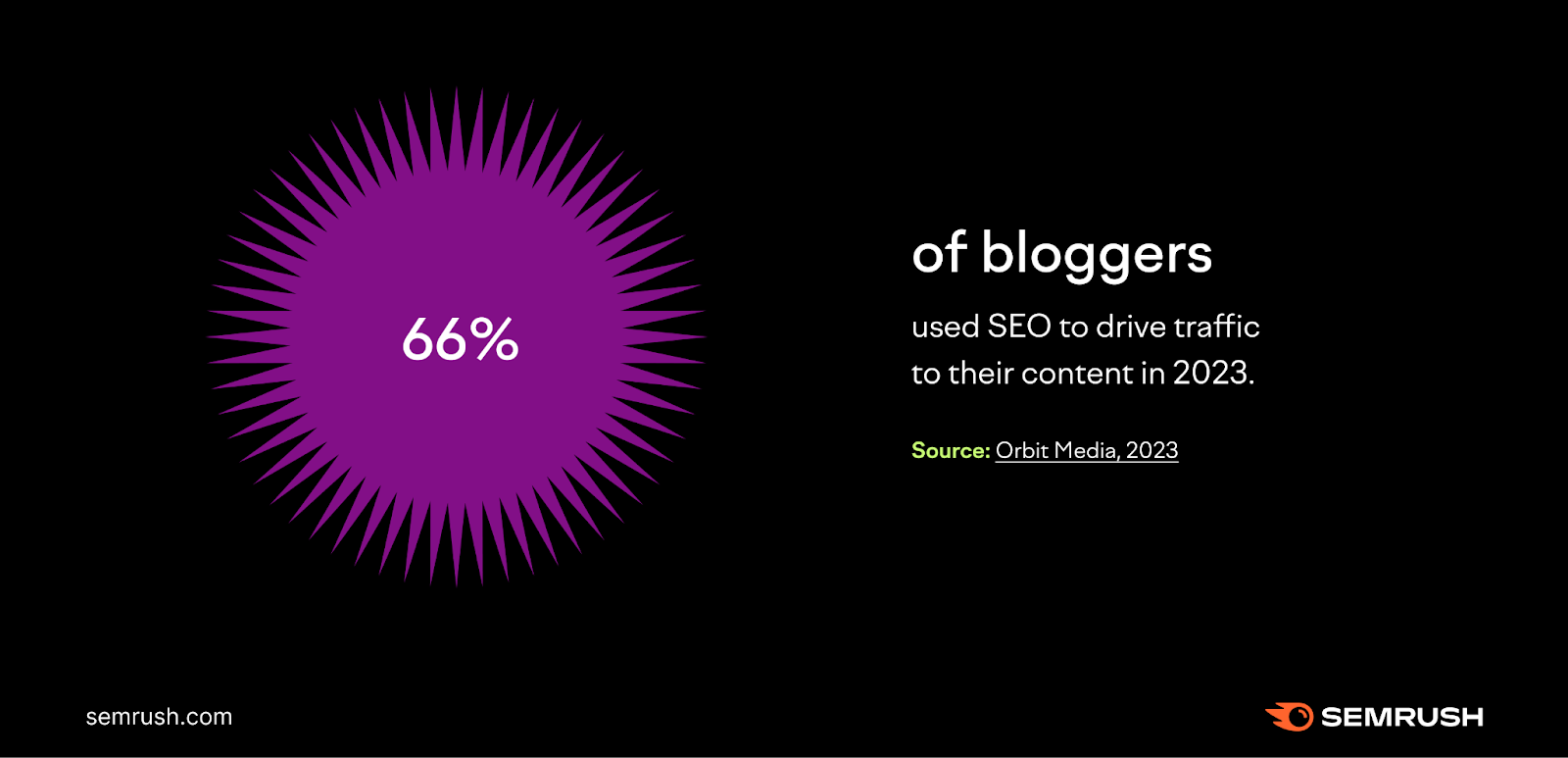
- Of surveyed marketers, 45% say that researching and adding keywords to their posts helps boost their blog rankings (Semrush, 2023)
- “Everything You Need to Know” and “Comparison” articles attract the most organic traffic on average. But only 0.4% and 0.8% of articles adopt this content format. (Semrush, 2023)
- Three-quarters of marketers predict that AI-enabled search will positively impact their blogs, with 68% believing it will help them get more traffic (HubSpot, 2023)
Blog Promotion Statistics
These blogging statistics provide an overview of how bloggers use social media to promote their content.
- Almost 43% of bloggers use Facebook for promotion. And 21% use Instagram. (First Site Guide, 2020)

- Around 24% of bloggers share a single post once, a further 24% share the same post twice, and 22% do it three times (First Site Guide, 2020)
- The most commonly shared articles on Facebook are “How to” and “Mistakes to Avoid” posts (Semrush, 2023)
- Facebook is the most popular advertising channel for bloggers, with 33.6% using this social network for ads (First Site Guide, 2020)
See Success with Your Blogging Efforts
Blogging remains a worthwhile marketing activity—provided you approach it the right way.
The stats indicate that top-performing blogs have a few things in common. Like containing images, using data, incorporating carefully selected keywords, and going through a formal editorial process.
Fortunately, you can speed up the blogging process with the right tools—like our Keyword Overview tool. It lets you instantly explore the largest keyword database on the market, helping you quickly pinpoint the ideal keywords for your posts.
